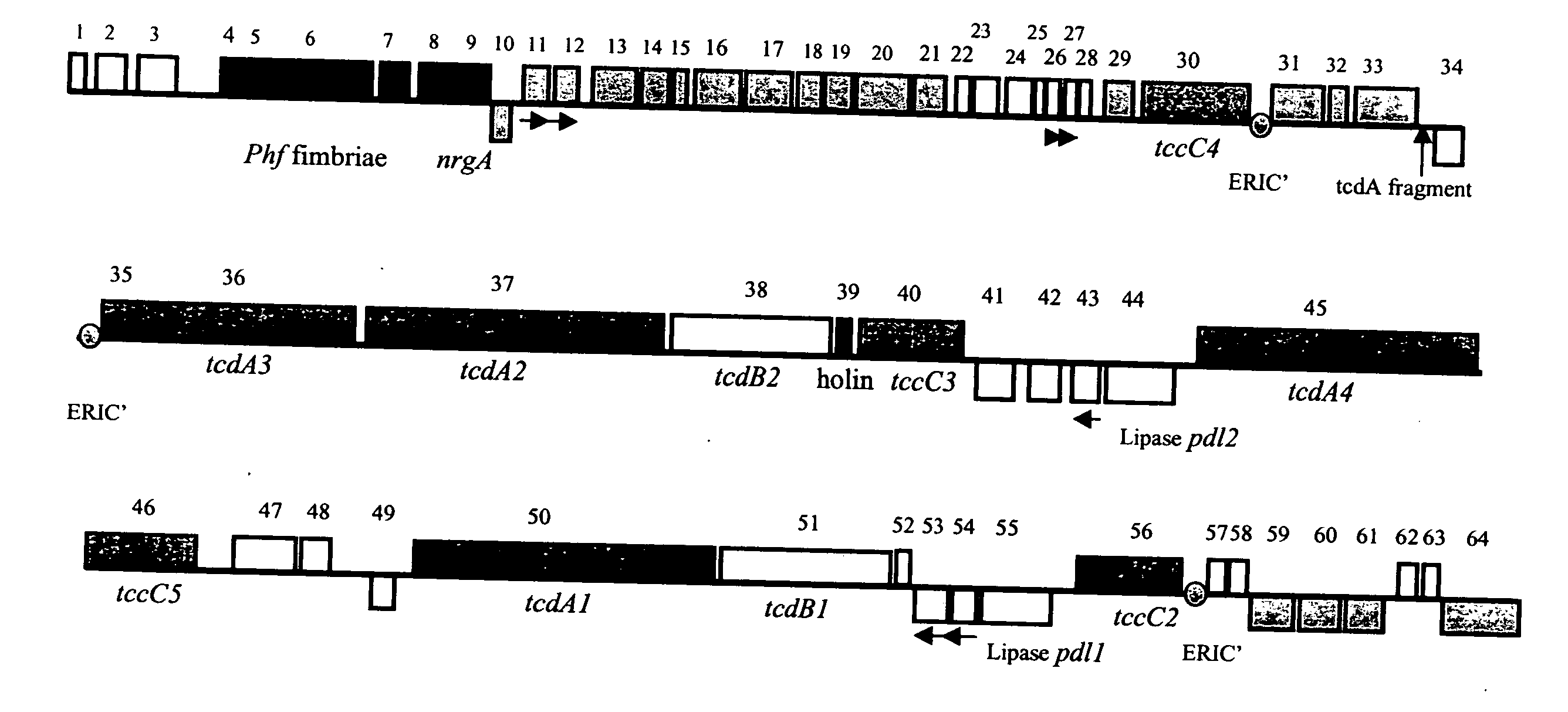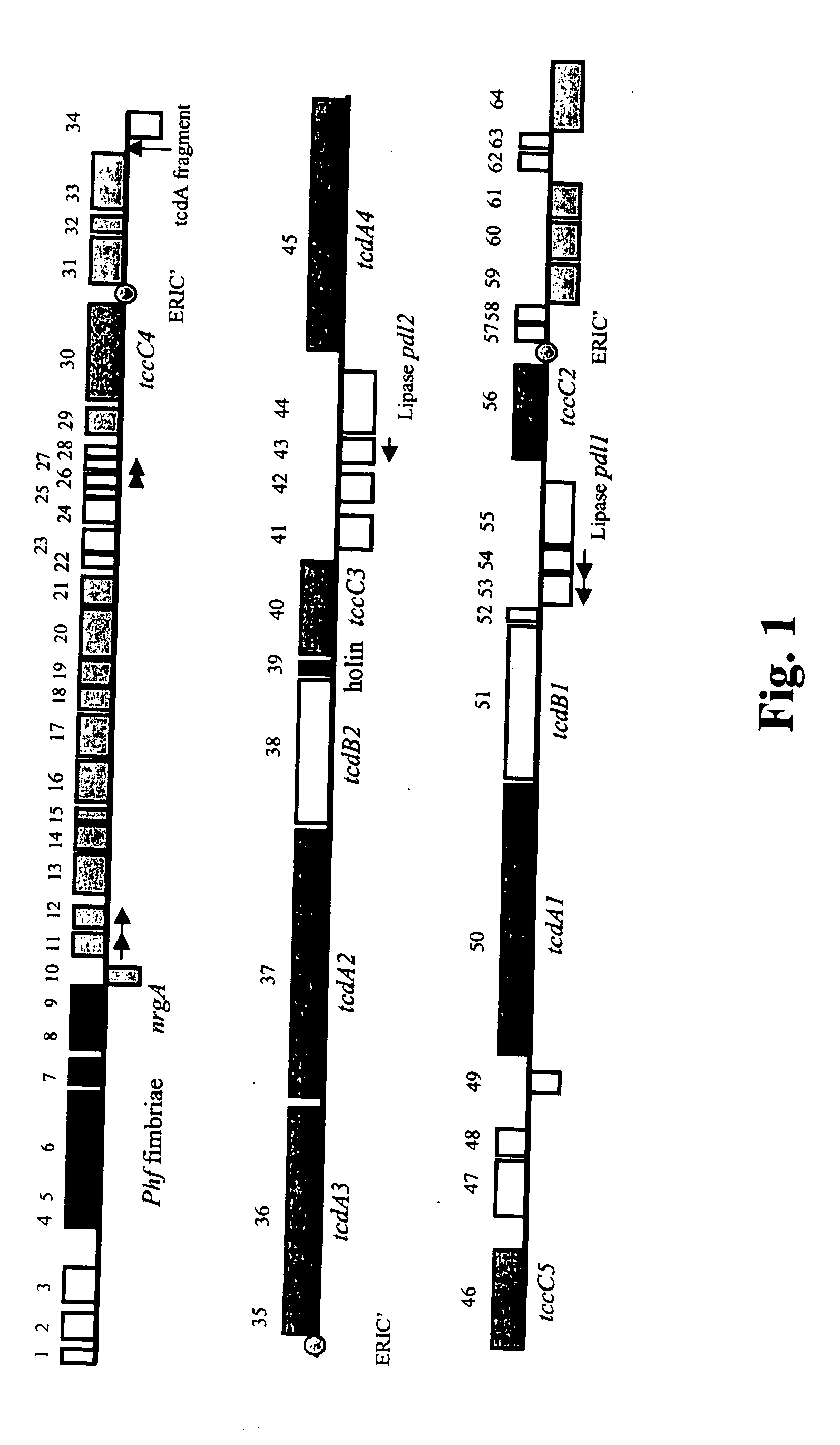DNA sequences from tcd genomic region of photorhabdus luminescens
a technology of photorhabdus luminescens and dna sequences, which is applied in the field of dna sequences from the tcd genomic region of photorhabdus luminescens, can solve the problem that the heterologous expression of toxin a does not afford the level of oral toxicity, and achieves the effect of improving the level of oral insect activity and similar utility
- Summary
- Abstract
- Description
- Claims
- Application Information
AI Technical Summary
Benefits of technology
Problems solved by technology
Method used
Image
Examples
Embodiment Construction
[0013]To isolate islands unique to Photorhabdus we end-sequenced an arrayed cosmid library of the W-14 strain and compared the end-sequences with those in public databases using BLAST algorithms. Unique cosmids were sequenced and checked for pathogenic phenotypes, such as the ability to persist within, or kill, insects. As all Photorhabdus strains (even clinical isolates) are pathogenic to insects, we identified genomic islands by gene homology (BlastX), relative location in the genome (tRNA linkage or within E. coli-like core sequence) or altered GC content (estimated as 41.5% for the W14 core).
[0014]FIG. 1 illustrates a portion of the toxin complex d (tcd) island from P. luminescens W14 (accession AY144119). This unique island carries multiple copies of toxin complex (tc) genes. The tc genes encode high molecular weight insecticidal Toxin complexes or Tc's which destroy the insect midgut. The island carries multiple tcdA-like genes (ORFs 36, 37, 45 and 50) and tcdB-like genes like...
PUM
| Property | Measurement | Unit |
|---|---|---|
| nucleic acid | aaaaa | aaaaa |
| mass spectrometry | aaaaa | aaaaa |
| molecular weight | aaaaa | aaaaa |
Abstract
Description
Claims
Application Information
 Login to View More
Login to View More - R&D
- Intellectual Property
- Life Sciences
- Materials
- Tech Scout
- Unparalleled Data Quality
- Higher Quality Content
- 60% Fewer Hallucinations
Browse by: Latest US Patents, China's latest patents, Technical Efficacy Thesaurus, Application Domain, Technology Topic, Popular Technical Reports.
© 2025 PatSnap. All rights reserved.Legal|Privacy policy|Modern Slavery Act Transparency Statement|Sitemap|About US| Contact US: help@patsnap.com


